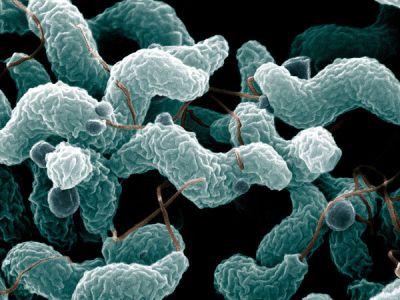Kingston researchers to develop alternatives to antibiotics
Posted Monday 22 April 2013
 In March, the UK chief medical officer Dame Sally Davies produced a report warning of the steady rise of multidrug resistant forms of many dangerous bacteria and said that antibiotics resistance is "as big a risk as terrorism". Kingston University's Laboratory of Molecular Bacteriology (LMB) is currently researching the molecular mechanisms of bacterial pathogenesis and survival in the environment, with the aim of the developing novel ‘antibacterials' – alternatives to traditional antibiotics.
In March, the UK chief medical officer Dame Sally Davies produced a report warning of the steady rise of multidrug resistant forms of many dangerous bacteria and said that antibiotics resistance is "as big a risk as terrorism". Kingston University's Laboratory of Molecular Bacteriology (LMB) is currently researching the molecular mechanisms of bacterial pathogenesis and survival in the environment, with the aim of the developing novel ‘antibacterials' – alternatives to traditional antibiotics.
The Laboratory of Molecular Bacteriology was recently established at the School of Life Sciences by Professor Andrey V Karlyshev, one of the leading researchers in the field. The laboratory trains PhD and MSc research students and one focus of its research is Campylobacter jejuni, the leading cause of gastrointestinal diseases in many countries, including the United Kingdom. This pathogen causes severe diarrhoea in humans and can lead to paralysis (Guillain-Barré syndrome). A growing number of strains of this bacterium are resistant to many antibiotics, and there is currently no vaccine. The results of the laboratory's studies have been reported at recent international research conferences and published in the European Journal of Microbiology and Immunology.
The main source of Campylobacter infection in humans is undercooked chicken products. Up to 90 per cent of chickens sold in supermarkets are reported to be contaminated with Campylobacter and the number of cases continues to rise. "There is no problem as long as the chickens are cooked properly," explained Professor Karlyshev. "Unfortunately, this is not always the case – hence over 60,000 annual Campylobacter infections just in England and Wales alone."
One remarkable feature of the Campylobacter bacterium is its ability to change shape, from a typically spiral form shown here to coccoid (spherical) shape. Some studies indicate that in its coccoid form the bacteria are more resistant to adverse conditions but could still cause disease. Understanding the mechanisms of such morphological changes may lead to a discovery of novel antibacterial targets.
Another area of research is investigating Campylobacter 'adhesins'. These are the parts of the bacteria that stick to the outside of the host cell enabling it to be infected. The adhesins only stick to certain areas of the host cell called 'receptors'. The aim of the Kingston research is to design artificial agents that stick to the receptors instead, getting in the way of the bacteria and preventing it from sticking to the host cell. The Campylobacter bacteria would then simply float away without infecting anything. As Professor Karlyshev explained, killing Campylobacter may seem like the most obvious solution but this would require using antibiotics that would kill beneficial bacteria too.
Professor Andrey Karlyshev is a professor of microbiology at Kingston University with research interests in applied, environmental and medical microbiology. Professor Karlyshev has had more than 100 papers published in journals including Nature, and been an invited speaker at conferences around the world. He has been on the editorial board of the journals Advances in Life Sciences and Asian Pacific Journal of Tropical Medicine, and has been a reviewer for articles submitted to leading journals in his field.
Contact us
- For non-student research enquiries, email the Research Support Office
- Research Support Office contacts
- Graduate Research School contacts
- Business and Enterprise Centre contacts
- How to get to Kingston University



